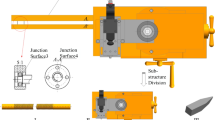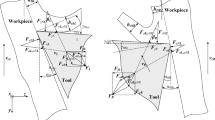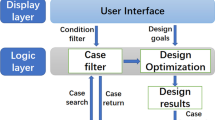Abstract
The violent vibrations generated during turning large-pitch screws seriously affect the tool wear, which reduces the cutting edge profile stability and affects the surface quality of the threads. We propose a new SVM-based design method for cutting edge profile stability of large-pitch thread turning tool considering the influence of vibration, and the model has also been validated experimentally. The simulation model of cutting process considering the influence of cutting vibration was established by simulating tool trajectory, and the influence of edge parameters and tool structure parameters on cutting edge profile stability was analyzed. Then, the data obtained from finite element simulation are used for training to establish the prediction model of cutting edge profile stability based on SVM. The average errors of cutting force, cutting temperature, and tool wear are 3.14%, 2.33%, and 3.91%, respectively, which proves the effectiveness of the prediction model. Furthermore, the optimization objective functions of blunt and chamfered edges were established, and the cutting parameters and tool structure parameters were optimized based on Artificial Bee Colony Algorithm. Results indicate that cutting edge profile-stabilized tool can be obtained by this method. The study builds a theoretical basis for suppressing vibration during the cutting process and provides technical assistance for tool design of different cutting edges.





















Similar content being viewed by others
Data availability
Not applicable.
References
Muthuswamy P, Nagarajan SK (2021) Experimental investigation on the effect of different micro-geometries on cutting edge and wiper edge on surface roughness and forces in face milling. Lubricants 9:102
Tatar K, Svenningsson I (2022) Effect of chamfer width and chamfer angle on tool wear in slot milling. Int J Adv Manuf Technol 120:2923–2935
Hua J, Shivpuri R, Cheng X et al (2005) Effect of feed rate, workpiece hardness and cutting edge on subsurface residual stress in the hard turning of bearing steel using chamfer + hone cutting edge geometry. Mater Sci Eng A Struct Mater 394:238–248
Zhu X, Cai L, Qian X (2023) Influence of different cutting edges caused by tool wear on cutting process of titanium alloy TC21 based on finite element model. Proc Inst Mech Eng Part B 237:229–239
Movahhedy MR, Altintas Y, Gadala MS (2002) Numerical analysis of metal cutting with chamfered and blunt tools. J Manuf Sci Eng 124:178
Javidikia M, Sadeghifar M, Songmene V et al (2020) On the impacts of tool geometry and cutting conditions in straight turning of aluminum alloys 6061–T6: an experimentally validated numerical study. Int J Adv Manuf Technol 106:4547–4565
Celaya A, Pereira O, González H et al (2019) Influence of cutting edge radius on tool life in milling Inconel 718. AIP Conf Proc 2113:080019
Brown I, Schoop J (2020) The effect of cutting edge geometry, nose radius and feed on surface integrity in finish turning of Ti-6Al4V. Procedia CIRP 87:142–147
Mook WK, Shahabi HH, Ratnam MM (2009) Measurement of nose radius wear in turning tools from a single 2D image using machine vision. Int J Adv Manuf Technol 43:217–225
Li P, Chang Z (2022) Numerical Modeling of the Effect of Cutting-Edge Radius on Cutting Force and Stress Concentration during Machining. Micromachines 13:211
Kuntoğlu M, Aslan A, Pimenov DY et al (2020) Modeling of cutting parameters and tool geometry for multi-criteria optimization of surface roughness and vibration via response surface methodology in turning of AISI 5140 steel. Materials 13:4242
Pinheiro C, Kondo MY, Amaral SS et al (2021) Effect of machining parameters on turning process of Inconel 718. Mater Manuf Processes 36:1421–1437
Chen Y, Wang Y (2021) Multi-objective Optimization of High Speed Milling Parameters Based on Genetic Algorithm. J Phys Conf Ser 2037:012062
Shah DR, Pancholi N, Gajera H et al (2022) Investigation of cutting temperature, cutting force and surface roughness using multi-objective optimization for turning of Ti-6Al-4 V (ELI). Mater Today Proc 50:1379–1388
Yang C, Jiang H, Liu B (2020) Optimization Design of Cutting Parameters Based on the Support Vector Machine and Particle Swarm Algorithm. Open Access Library Journal 7:1–8
Gadagi A, Adake C (2021) A constrained multi-objective optimization of turning process parameters by genetic algorithm and particle swarm optimization techniques. Mater Today Proc 42:1207–1212
Jaspers S, Dautzenberg JH (2002) Material behaviour in conditions similar to metal cutting: flow stress in the primary shear zone. J Mater Process Technol 122:322–330
Fu XF (2020) Research on vibration and wear coupling mechanism of large-pitch turning tool and cutting stability. Harbin University of Science and Technology, China
Zhang HJ, Sun C, Liua M et al (2018) Analysis of the optimization of tool geometric parameters for milling of Inconel718. IOP Conf Ser Mater Sci Eng 423:012030
Acknowledgements
The authors gratefully acknowledge the Harbin University of Science and Technology, the Fundamental Research Foundation for Universities of Heilongjiang Province, and the National Nature Science Foundation of China, for providing facilities and funds under research grants KYYWF-0349 and 5157518 to conduct this research.
Funding
This work is supported by the Fundamental Research Foundation for Universities of Heilongjiang Province (KYYWF-0349) and the National Nature Science Foundation of China (51575148).
Author information
Authors and Affiliations
Contributions
Fu and Li were responsible for the literature study, data analysis, and writing the paper. Fu and Li were the supervisor of this work, who proposed the research idea, technical scheme, and all needed support conditions. They also participated in data analysis and were responsible for completing the article. Wang was involved in the discussion and data analysis. Li and Wang were involved in the discussion and significantly contributed to making the final draft of the article. All the authors read and approved the final manuscript.
Corresponding author
Ethics declarations
Ethics approval
Not applicable.
Consent to participate
All authors contribute and participate in the work carried out in this paper.
Consent for publication
The authors of this paper agree to publish this work in the International Journal of Advanced Manufacturing Technology.
Conflict of interest
The authors declare no competing interests.
Additional information
Publisher's note
Springer Nature remains neutral with regard to jurisdictional claims in published maps and institutional affiliations.
Rights and permissions
Springer Nature or its licensor (e.g. a society or other partner) holds exclusive rights to this article under a publishing agreement with the author(s) or other rightsholder(s); author self-archiving of the accepted manuscript version of this article is solely governed by the terms of such publishing agreement and applicable law.
About this article
Cite this article
Fu, X., Li, K., Li, Z. et al. A SVM-based design method for cutting edge profile stability of large-pitch thread turning tool considering vibration. Int J Adv Manuf Technol 125, 4529–4547 (2023). https://doi.org/10.1007/s00170-023-10985-2
Received:
Accepted:
Published:
Issue Date:
DOI: https://doi.org/10.1007/s00170-023-10985-2




